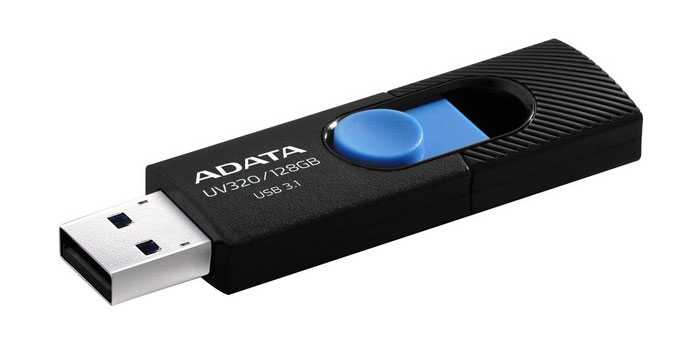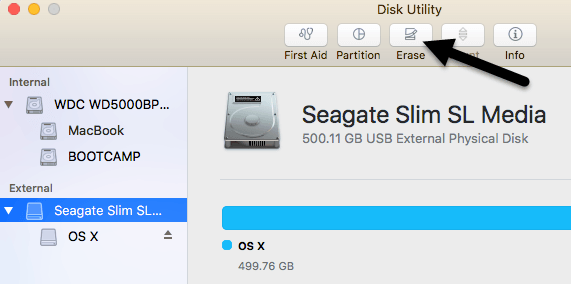Backing up your Mac is simple and important. We recommend it for everyone.
- Setting Up Mac Os Recovery Onto Thumb Drive Windows 7
- Setting Up Mac Os Recovery Onto Thumb Drive Mac
- Setting Up Mac Os Recovery Onto Thumb Drive Download
- Setting Up Mac Os Recovery Onto Thumb Drive Windows 10
Back up with Time Machine
Time Machine is the built-in backup feature of your Mac. It’s a complete backup solution, but you can use other backup methods as well.
Create a backup
Setting Up Mac Os Recovery Onto Thumb Drive Windows 7
Store files in iCloud
You can also use iCloud and iCloud Drive to store files, such as your photos, documents, and music.


Set up iCloud and iCloud Drive
Restore your Mac from a backup

When you have a backup, you can use it to restore your files at any time, including after the original files are deleted from your Mac.
Restore from a backup
Prepare your Mac for service
Apr 02, 2020 Backup your data. Reinstalling OS X will erase all of the data on your computer. Because of this, you should ensure that all of your important documents, photos, videos, and other files are copied onto at least one other storage location. You can burn your backup files to a DVD, copy them to an external hard drive, or even upload them to online storage.
Making a backup is an important part of preparing your Mac for service, especially because some types of repair might require erasing or replacing your hard drive.
Get your Mac ready for service
How much space do I need for a backup?
To see the size of a specific file or folder, click it once and then press Command-I. To see storage information about your Mac, click the Apple menu in the top-left of your screen. Choose About This Mac and click the Storage tab. For Time Machine backups, it's good to use a drive that has at least twice the storage capacity of your Mac.
Related topics
Free up storage on your Mac
Setting Up Mac Os Recovery Onto Thumb Drive Mac
macOS can save space by storing your content in the cloud. This isn't a backup, but it includes new tools to make it easier to find and remove large or unwanted files before you make a backup.
Use Optimized Storage in macOS
Setting Up Mac Os Recovery Onto Thumb Drive Download
Erase or format a storage device
You can use Disk Utility if you need to erase or format a storage device.
Learn how to use Disk Utility
macOS Community
Setting Up Mac Os Recovery Onto Thumb Drive Windows 10
If you can't back up your Mac
We'll find the best support options for you.
To use an external hard drive for Windows Vista Complete PC Backup or Windows 7 System Image, you must ensure that the drive is formatted with the NT File System, or NTFS. Because most external drives come formatted with the FAT32 standard, it means that the drive must be converted.
You can use either an external hard drive or a very high capacity thumb drive, but either way, the NTFS will have to be installed. The conversion operation is technical, but not that difficult to work through. Here are the steps:
-
Open the Computer window and make a note of the external drive letter and its volume label.
The drive’s volume label is a smidgen of text used to identify the media by name. It’s not used for much in Windows, except for instances that involve formatting or conversion. In the Computer window, the volume label name appears in front of the drive letter.
-
Close the Computer window.
The next step is to open an administrator Command Prompt window.
-
From the Start menu, choose All Programs→Accessories and then right-click the Command Prompt icon.
-
Choose the command Run As Administrator from the pop-up menu.
The Administrator Command Prompt window opens and displays a command prompt.
-
Click the Continue button or type the administrator password to continue.
-
Type the command convert <drive letter>: /fs:ntfs, but replace <drive letter> with your PC’s external drive letter.
If the external drive letter is J, you type this command:
Double-check your typing! A colon appears after the drive letter followed by a space. A colon appears between fs and ntfs.
-
Press Enter.
If you see the message Drive is already NTFS, you’re fine; skip to Step 10. Also, confirm that you typed the proper drive letter in Step 6.
You’re prompted for the drive’s volume label:
To cancel the operation at this point, press Ctrl+C.
-
Type the drive’s volume label.
You can always reopen the Computer window if you forget what the label was, but because you made a note of it in Step 1, you won’t have to.
-
Press Enter.
Windows converts the drive’s internal structure to the NTFS format. Again, none of the drive’s files are erased.
The process can take several minutes, depending on the drive’s capacity. You see some information displayed on the screen as you wait.
When the operation has been completed, you see the text Conversion complete and then another command prompt.
-
Type exit and press Enter to close the Administrator Command Prompt window.
To confirm that the drive has been converted, open the Computer window and select the external drive’s icon. The bottom part of the window, the Details pane, should describe the file system as NTFS. (If the Details pane doesn’t show up, choose Layout→Details Pane from the Organize button menu.)
-
Converting the drive to NTFS doesn’t change how you can use the drive. As far as you’re concerned, the drive still shows up and holds files just like before. Internally, however, Windows is using the drive more efficiently.
-
Most operating systems now available understand the NTFS format and can use an NTFS hard drive just as well as they can use a FAT32 hard drive.
-
Converting the drive is not the same as reformatting the drive. The reformat operation erases the drive’s contents.